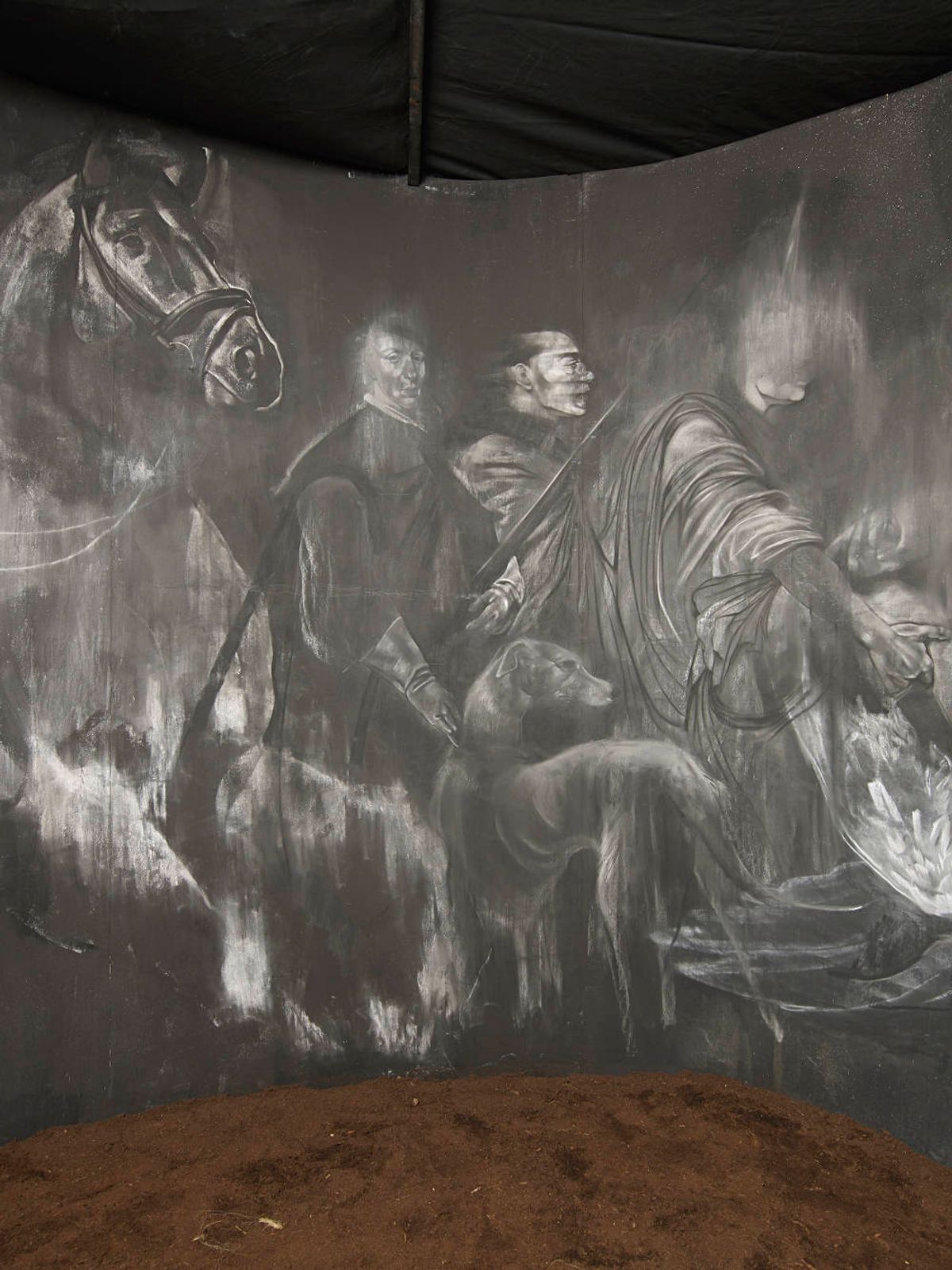The burlap tent-like structure in l’étrangère has an unsettling history woven into its rough fabric. Resembling the makeshift structures erected by nomadic Roma people, inside hangs a panoramic tableau which takes its formal source of inspiration from a befittingly gruesome work—Rembrandt’s The Anatomy Lesson of Dr. Nicolaes Tulp (1632). In the exhibition Welcome to the country where the Gypsy has been hunted (until 5 January) Krzysztof Gil takes characters from the Golden Age painting, created in the same century as widespread legislation in Europe which persecuted Roma, and depicts them returning from a hunt. On their trophy heap lies a deer, a bird and a Roma person, a reference to a historic tradition of state-sanctioned gypsy killing.
The explicit references to Roma people are made sparingly, louder in their absence and the space it does not inhabit. This is not a people ignored, it is a people in hiding. Gil’s own Roma ancestry makes this a particularly moving and eerie exhibition, viscerally connecting us to a dark, violent past which bears troubling contemporary parallels.
• For an interview with the artist, listen to The Art Newspaper podcast
The image of the paint-splattered artist may have been forever removed from popular consciousness after this year’s Turner Prize saw all four nominees submit moving-image works. In what was no doubt the cleanest set-up to date, four film or video installations were submitted with varying levels of success. In the exhibition at Tate Britain (until 6 January) Naeem Mohaiemen presents two films; the first a dense musing on the failures of socialism, the other a week in the life of a middle age man marooned in an airport.
The prize’s winner Charlotte Prodger has shot her entire film on an iPhone giving the piece a shaky stream of consciousness style. A collection of four-minute reflections on her life, it is softly-spoken and somewhat lethargic but explores Prodger’s adolescence and queerness, which no doubt resounded with a 2018 judging panel.
The political is given a distinct stillness in Luke Willis Thompson’s 35 mm films. Willis Thompson has filmed the face of Diamond Reynolds who in turn famously live-streamed the US police shooting and killing of her boyfriend in 2016. The turmoil of her story and the immediacy of her video through is now brought to standstill. The image of her face barely moves and is placed alongside two black men, all victims of racist police brutality.
The most innovative and interesting submission comes from the research agency-cum-architectural-collective Forensic Architecture. Their hectic film shows a morning raid on a Bedouin village by Israeli police filmed on a camera attached to a kite. Sirens wail, people scream, it is stressful experience to watch. In a second room lies the extensive research behind the film. Exactingly analysed histories and 3D renderings of a village the Israeli government denies the existence of inform the madness of the action.
The explosions of colour in Of Gods, Rainbows and Omissions at Somerset House (until 6 January) are more than surface level fun, they speak to allegories of a post-apartheid world envisioned by South-African artist Athi-Patra Ruga. Films, sculptures and hand-woven tapestry tell the stories of Azania, an idealised state based on unity and equality. This rainbow coloured nation serves as a means to confront social injustices that Ruga is unable to in real life. Matriarchal, queer, ancient yet modern the characters within this show inhabit a space of otherness. Reference points to periods of black excellence like the Harlem Renaissance ground the otherwise fantastical environments Ruga has created with real world history.


